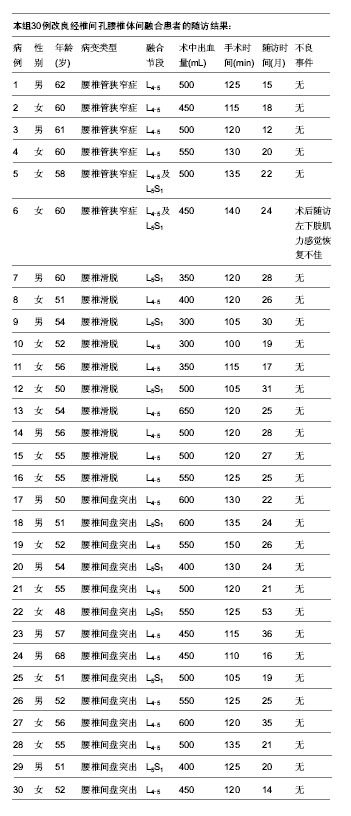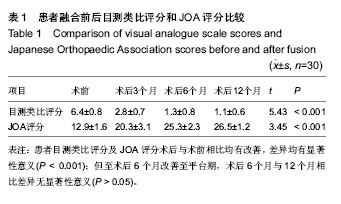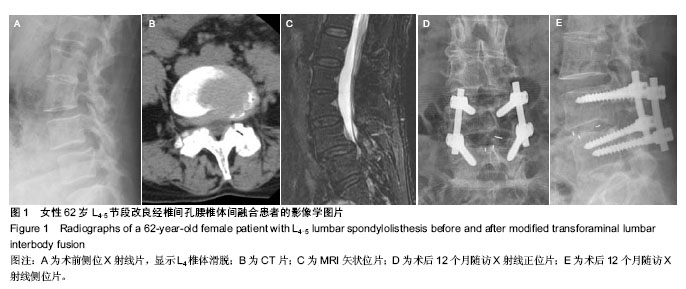中国组织工程研究 ›› 2014, Vol. 18 ›› Issue (53): 8575-8579.doi: 10.3969/j.issn.2095-4344.2014.53.009
• 脊柱植入物 spinal implant • 上一篇 下一篇
置入脊柱内固定系统改良经椎间孔椎体间融合修复腰椎退行性病:1年随访
潘文明,杨金华,范胜利,张 伟
- 常熟第二人民医院脊柱外科,江苏省常熟市 215500
The modified transforaminal lumbar interbody fusion in spinal internal fixation system for lumbar degenerative disease: 1-year follow-up
Pan Wen-ming, Yang Jin-hua, Fan Sheng-li, Zhang Wei
- Department of Spine Surgery, the Second People’s Hospital of Changshu, Changshu 215500, Jiangsu Province, China
摘要:
背景:传统的后路腰椎体间融合存在诸多不足,改良经椎间孔腰椎体间融合为需要手术治疗的腰椎退行性疾病提供了新的修复方案。 目的:观察脊柱内固定系统置入改良经椎间孔腰椎体间融合对腰椎退行性疾病的修复效果。 方法:回顾性分析2010年3月至2013年8月在常熟第二人民医院行脊柱内固定系统置入改良经椎间孔腰椎体间融合的腰椎退行性疾病患者30例,其中退行性腰椎管狭窄症患者6例,Meyerding分型Ⅰ-Ⅱ度;退行性腰椎滑脱患者10例;腰椎间盘突出症伴节段不稳14例。观察患者融合前及融合后末次随访的目测类比评分、腰背痛日本骨科协会评分的改善以及椎间融合情况。 结果与结论:30例患者均顺利完成手术并获得12个月以上的随访,所有患者末次随访均无内固定断裂松动,椎间植骨融合良好,无Cage下沉、移位。患者融合后腰背痛症状明显改善,融合前目测类比评分为6.4±0.8,末次随访为1.1±0.6,差异有显著性意义(P < 0.001);末次随访腰背痛日本骨科协会评分26.5±1.2较融合前12.9±1.6明显改善,改善率为(83.9±7.9)%,其中优27例,良3例,优良率100%。提示脊柱内固定系统置入改良经椎间孔腰椎体间融合扩大了适应证,贯彻了传统经椎间孔椎体间融合技术的设计思想和微创理念,操作更加简单、安全,并发症更少,选择性用于腰椎退行性疾病的临床修复效果满意。
中图分类号:


